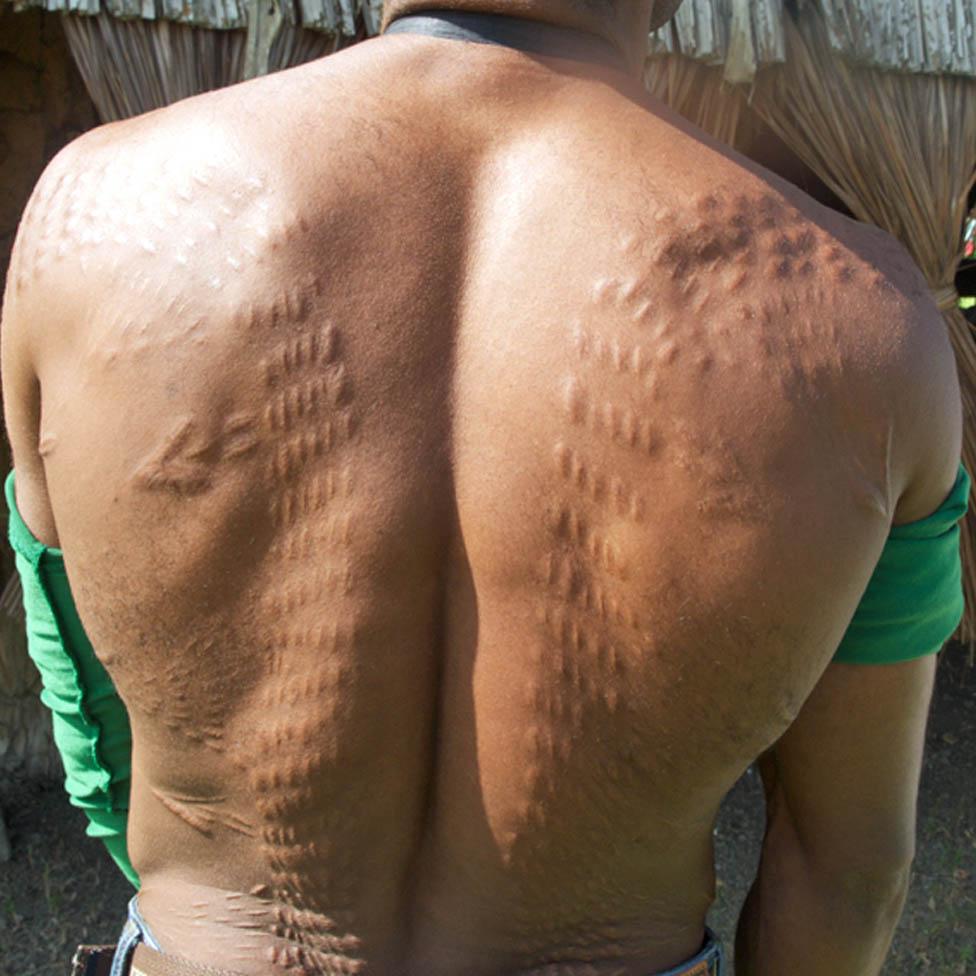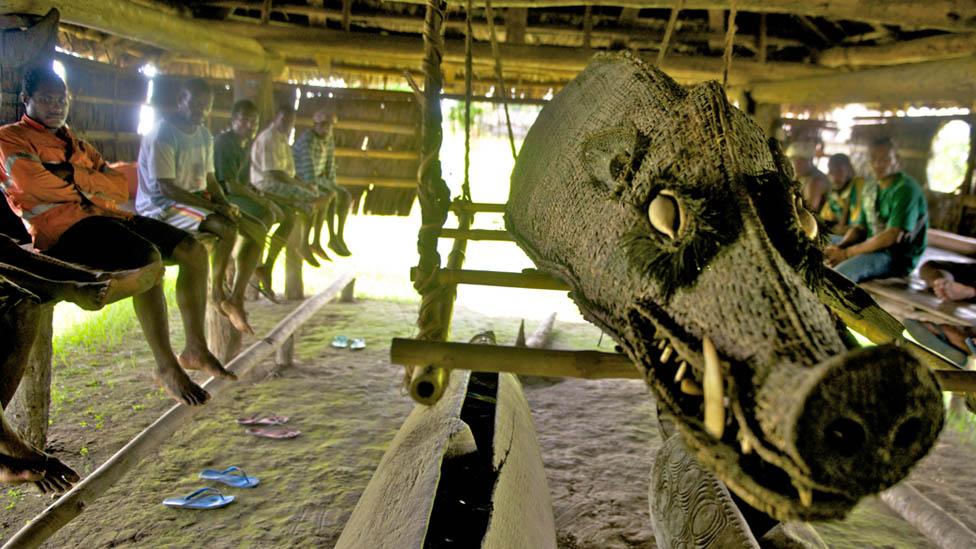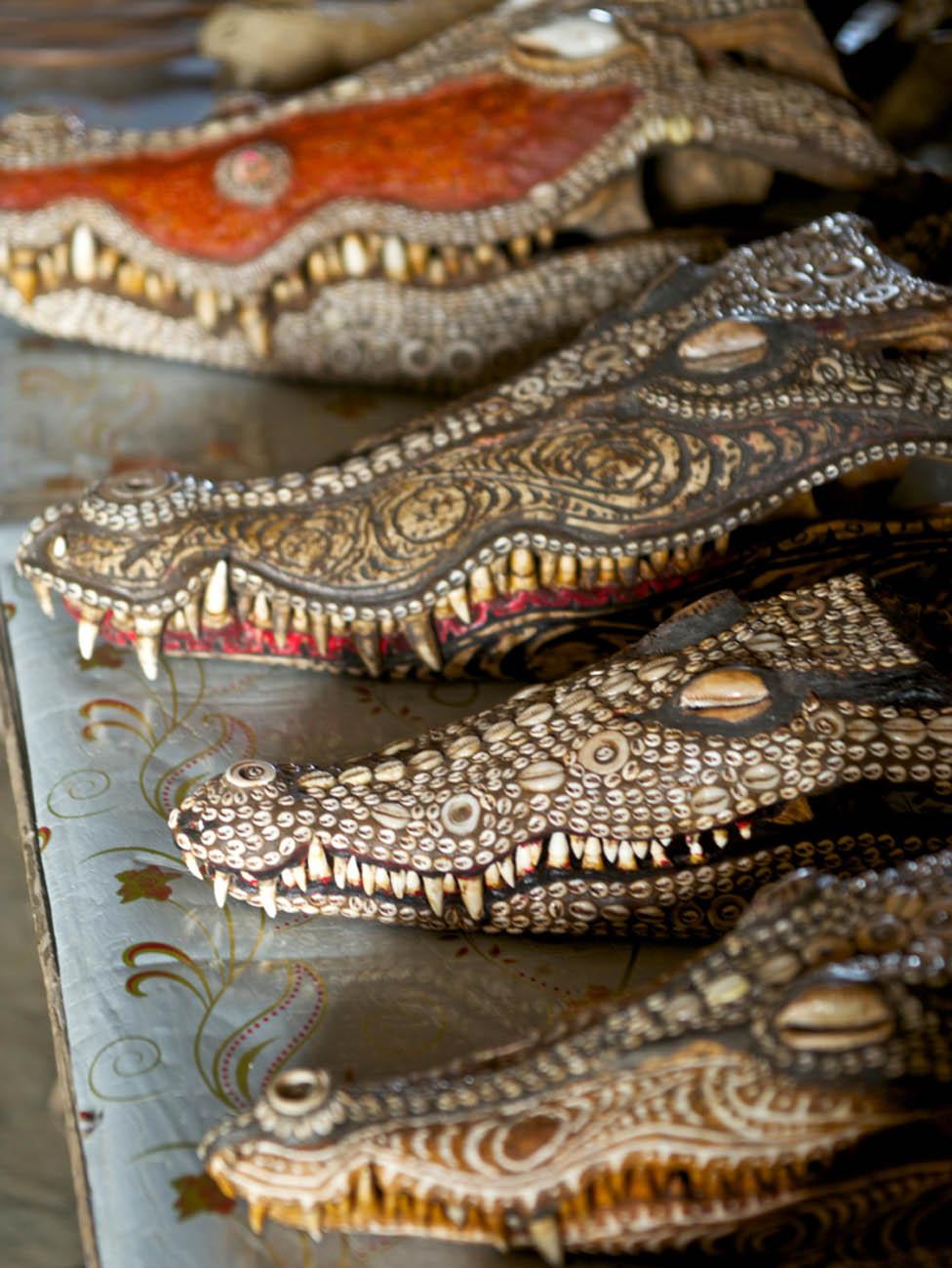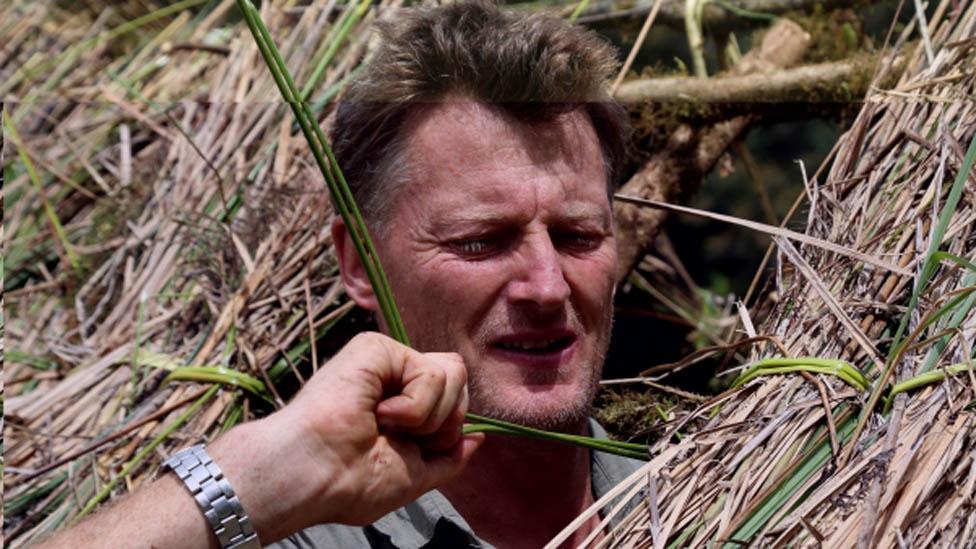Why some men in Papua New Guinea cut their skin to resemble crocodiles
- Published

In Papua New Guinea, on the eastern half of the world's second-biggest island, 80% of people live in rural villages - and many in the most remote and isolated regions have little contact with the outside world at all. Here, as Mark Stratton found, traditional rituals still survive.
The dappled light, cast through the worn thatched roof of the men's spirit house in Parambei village, reveals the rippling scars across the chests of several male initiates.
The spirit houses - or Haus Tambaran - along the Sepik river in northern Papua New Guinea are the focal points for a regional belief system which reveres spirits manifesting as animals. These houses are richly decorated with murals and carvings of all manner of creatures - from pigs and cassowaries to snakes and eagles. Yet it is the crocodile that truly embodies animist power along the Sepik.
In one of the world's most extreme initiation ceremonies, the men of the Sepik have their backs, shoulders, and upper torsos sliced by razor blades to leave long raised welts resembling a crocodile's hide.
"The boys are brought to the spirit house by their uncles to be cut. It can take about an hour or two," explains Aaron Malingi, Parambei's chief-councillor. "Years ago the cutting used to be done by sharpened bamboo".

Spirit house in Kaminimbit
Looking at the men's scarred bodies, I can scarcely imagine the agony of this ordeal.
"Some boys pass out from the pain," Malingi reveals. "The older men play sacred flutes to soothe them and the cuts are covered with tree oil and white river clay to prevent infection."
He tells me the scarification symbolises the purging of their mothers' blood and the gaining of their own adult blood - in a somewhat excruciating metaphorical severing of the apron strings.
Along with the cutting, the young men may spend several months inside the spirit house learning life skills from the initiated men. "They gain knowledge of the village spirits, how to fish, to carve, and how to support their wife and family," says Malingi.

I ask how the crocodile became such a preeminent figure of spirit worship in the Sepik. "The crocodile is a symbol of power," says Malingi. "We fear them but draw energy from that power." He tells me a local creation myth suggests the Sepik people descend from the crocodile and emerged from the river as humans to walk on land.
During my four-day voyage up the Sepik by boat I found this custom of scarification and crocodilian beliefs remain strong in the middle Sepik region, particularly among the Iatmul language speakers, one of Papua New Guinea's staggering 832 language groups.
These villages are still remote and hard to reach, so they've been little touched by the outside world. They live off a starchy staple crop called sago palm and fishing. Cash crops include sugarcane. Pigs are reared and used in ceremonies as sacrifices and as a currency to settle disputes.

Crocodile scarification has disappeared from some river communities. At Kaminimbit, half a day by boat east of Parambei, I was told scarification had been stopped locally because of the influence of the Christian church. After German colonial rule arrived around 1885, the Sepik region began to turn to the gospels.
Even so, in these communities where razor blades have been set down, Haus Tambaran remain alongside the church and function as a sort of social club for the men to idle their days away inside.
In Wombun village, set in a flooded morass of lakes and tributaries that coalesce into a mirror-glass horizon, the older men bear the marks of crocodile initiation. But it's dying out. "The missionaries were against it," says Simon Kemaken, a primary school teacher. "We still have a ceremony every few years to revere the crocodile, but these days few local boys are getting cut." He says the cost of arranging the scarification ceremonies is putting the younger men's families off.
Yet in Parambei, where the Catholic church is present, scarification remains almost universal among the men. I wondered why the church's influence hadn't prevailed here.


Decorated crocodile skulls in Kaminimbit
Find out more
From Our Own Correspondent has insight and analysis from BBC journalists, correspondents and writers from around the world
Listen on iPlayer, get the podcast or listen on the BBC World Service, or on Radio 4 on Thursdays at 11:00 and Saturdays at 11:30 BST

"The spirit has always been strong in our village, but the missionaries have influenced our practices," Malingi told me. It was one of those moments when modern Westerners like me often tut and think "Oh, why can't we leave these people's customs alone?" Until Malingi revealed the missionaries had also persuaded his ancestors to stop head-hunting.
He showed me a knotted rope in one of their two large spirit houses where each of the dozens of knots represent a severed head. And he explained those heads were stripped of their flesh - which would be mixed with pig and dog meat and fed to children, to make them strong. I imagined the practice had disappeared ages ago, so was surprised when he insisted it only ended around 1943.
Later he told me the next mass scarification of the village's young men into the cult of the crocodile would take place this November. "It is important we continue this in Parambei," he insisted. "The crocodile cutting gives us a sense of purpose. After the men have undergone the pain of cutting they are ready for anything in life."

You might also be interested in...

Explorer Benedict Allen encountered a tribal war, was caught in electrical storms and fell ill with malaria and dengue fever on an ill-fated jungle trek in Papua New Guinea. He also endured an initiation into manhood in which he was kept in a "crocodile nest" with 20 others and repeatedly cut with bamboo blades to leave scars that looked like crocodile scales.
Jungle explorer Benedict Allen tells of malaria and tribal wars

Photographs by Mark Stratton unless otherwise stated.
Join the conversation - find us on Facebook, external, Instagram, external, YouTube, external and Twitter, external.
